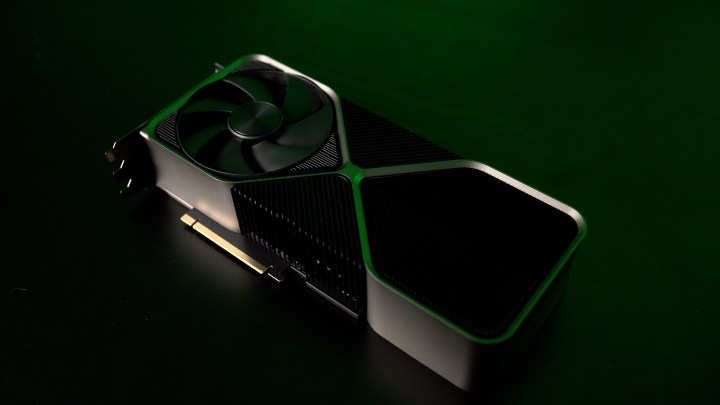A reliable leaker has just revealed that Nvidia might be abandoning the idea of releasing an RTX 4090 Ti. If the project hadn’t been canceled, the RTX 4090 Ti would have ended up becoming the best GPU by a mile — or at least the most powerful. That spot is currently held by Nvidia’s own RTX 4090.
But don’t worry — if the report about the cancellation is true, it’s not such a bad thing at all. In fact, it might be for the best for pretty much everyone involved. Here’s why.
I'm afraid there won't be RTX 4090 Ti anymore. Some low-grade AD103 and AD106 chips will be another versions of RTX 4070 and 4060.
— kopite7kimi (@kopite7kimi) July 27, 2023
The information comes from a reliable leaker — kopite7kimi on Twitter — who has a good rep for Nvidia rumors. It’s still unconfirmed, however. Then again, so is the RTX 4090 Ti, seeing as Nvidia hasn’t even mentioned its existence. Be that as it may, there’s been plenty of speculation about a potential RTX 4090 Ti or even an RTX Titan Ada card in the past few months. It almost felt certain that such a card was in the works, but now, kopite7kimi seems to think that Nvidia might have changed its mind.
The potential for a better-than-best Ada Lovelace card is definitely there, seeing as the RTX 4090 doesn’t utilize the full AD102 GPU. A higher-tier card could unlock the remaining CUDA cores and push the performance even more.
While the RTX 4090 comes with 16,384 cores, there’s still a fair bit to squeeze out of the chip, as the maximum is at 18,432 — and Nvidia already has cards that utilize more of the chip. The confusingly named RTX 6000, a workstation GPU, unlocks 18,176 cores and bumps the VRAM to a massive 48GB, but that’s not a consumer card the way an RTX 4090 Ti could have been.
There are multiple reasons why Nvidia might choose not to launch an RTX 4090 Ti. For one, it simply doesn’t need to. It already holds the top spot with the RTX 4090 and it’s in no danger of having to give that up. AMD enthusiasts who need more juice than its flagship RX 7900 XTX can provide will automatically head to Nvidia, as that’s the only option on the market right now. Moreover, AMD has hinted that it’s not planning to launch an RTX 4090 competitor, and with the RX 7900 XTX being closer to the RTX 4080 in performance, there’s no pressure for Nvidia to aim higher just to flex.
There’s also the question of demand for such a GPU. Sure, the RTX 4090 is an outstanding graphics card, but it already costs $1,600. It’s not outlandish to assume that an RTX 4090 Ti might fetch up to $2,000, which is enough for an entire PC build for many gamers. Seeing as Nvidia already has some use for the nearly full AD102 GPU (AI workflows and other professional uses), it really doesn’t need to gamble on a card that many consumers won’t even consider buying.

I, for one, wouldn’t mind if Nvidia scrapped the entire idea of the RTX 4090 Ti. Such a card would only be useful to a limited number of people, but it might still serve to drive up the prices for Nvidia’s next-gen RTX 5000. After all, if the RTX 5090 would be expected to beat or match the RTX 4090 Ti, that’d just give Nvidia another excuse to stick to its current pricing strategy and price it really high. Following that, the midrange cards might see inflated prices too, and that’s really the last thing we need right now.
Speaking of midrange, there’s still some room for Nvidia to expand this generation, and kopite7kimi hints at an interesting possibility — different versions of the RTX 4070 and the RTX 4060. The RTX 4070 turned out well, but the RTX 4060 (and its Ti versions) aren’t quite as impressive due to problems like limited VRAM or poor performance-per-dollar. And there are other GPUs that I’d like to see first, such as the RTX 4080 Ti or even the budget-friendly RTX 4050.
Nvidia might still surprise us and drop the RTX Titan Ada, or even the RTX 4090 Ti, on our heads at some point between now and 2025, when it’s rumored to be releasing the next generation of GPUs. However, if the RTX 4090 remains the most powerful consumer GPU until then, it might be for the best — unless AMD mounts a challenge to Nvidia’s dominance.




